Fond Memories Found In-Of All Places –A Range Basket
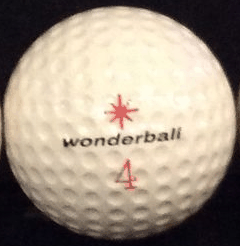 I love it when I stumble across something that instantly floods my brain with fond memories of youth. In my basket of range balls, I came across an old golf ball. People are always hitting their old balls on the range trying to get in a few extra shots for free. Just looking at the dimple pattern, I knew it was old, a Wonderball #4 from the Worthington Golf Ball Company of Elyria, Ohio. Now, I doubt that many players today would recognize this brand. However, to a young lad who had to scour the woods and ponds of local muni courses be-cause he was forbidden to raid his father’s golf bag for those precious white orbs, they were a blessing. But that is a whole other story. Although western Massachusetts was Spalding territory, there were plenty of inexpensive Worthingtons to be found.
I love it when I stumble across something that instantly floods my brain with fond memories of youth. In my basket of range balls, I came across an old golf ball. People are always hitting their old balls on the range trying to get in a few extra shots for free. Just looking at the dimple pattern, I knew it was old, a Wonderball #4 from the Worthington Golf Ball Company of Elyria, Ohio. Now, I doubt that many players today would recognize this brand. However, to a young lad who had to scour the woods and ponds of local muni courses be-cause he was forbidden to raid his father’s golf bag for those precious white orbs, they were a blessing. But that is a whole other story. Although western Massachusetts was Spalding territory, there were plenty of inexpensive Worthingtons to be found.
It all began in 1904 when inventor George Worthington obtained the rights to produce a rubber core ball from Coburn Haskell, who had patented the concept of winding rubber strips into a ball which was covered with gutta per-cha. The ball known as the “Bounding Billie” would revolutionize the game, just as the solid gutta percha version did in 1848. Worthington wasn’t the only company to obtain the rights to produce balls, but they produced the best version at the time. As they say, necessity is the mother of invention, Worthington had to be a bit creative with his product. That was because the A.G. Spalding company’s rights included a circular dimple pattern which only they could use.
That did not stop George. He made balls with diamond patterns, pimples in the dimples and a mesh matrix. He also developed his own winding ma-chine that wrapped the rubber strands around a solid core in a more even pattern than any of the other companies who were hand-winding their balls.
Over the next 50 years, the Worthington Golf Ball Company became one of the largest supplier of balls in the world. They were the first to produce a liquid-center ball, first to develop hardness and compression tests, and first to produce a white-covered ball with a one-piece dip process. In 1910, Worthington came out with the “Radio” ball, with a center containing radium particles. No one knew what it did, but because of Madam Curie’s work with radium at the time, radium was all the rage. The company was truly innovative, thanks to George. After World War I, he developed the first balata-covered version. For the interior, he would freeze the core before winding, which made the ball harder and tougher. He even x-rayed the balls for trueness.
When World War II broke out, the government sent word out to companies that no more golf balls were to be manufactured for the duration of the war. That did not stop Worthington. He began reprocessing old balls. Had it not been for his efforts, golf may have gone by the wayside. Fortunately, the Surgeon General’s Office saw the health benefits of golf and the government offered manufacturers synthetic material, and true to form, Worthington develop a synthetic golf ball that was shipped all over the world wherever servicemen were stationed. After the war, the company continued to thrive and try many new processes and materials, expending considerable research in the ball production.
Unfortunately, the Worthington brand is no longer around today except for those found in golf range baskets or on a golf collector’s trade show table. The company was absorbed in 1966 by the Victor Comptometer Company and moved to Illinois. Vic-tor brand morphed into the PGA Company, which eventually became Tommy Armour Golf that now is sold by Dick’s Sporting Goods, which acquired it from Sports Authority. Gone but not forgotten by a young lad who came to love a game that required a precious pearl called “Wonderball.”
Mike Stevens is the Southeast Region director of the USGTF and golf teaching pro at MacDill Air Force Base in Tampa, Florida. He is the 2005, 2010 and2012 National Hickory champion and the 2004U.S. Golf Teachers Senior champion. He also owns and operates the Mike Stevens on Target Golf School in Tampa.



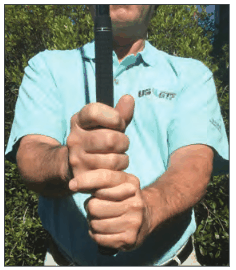


 WOW. Double wow. In a move that can literally be described as a game-changer, the USGA and R&A decided this past March 1 that many of the rules by which we play are to be jettisoned, sent to the scrapbook of history. The proposed new rules are to take effect January 1, 2019. Knowledgeable observers say this is the most drastic rules development since the original 13 rules were drawn up in 1744 by the Gentlemen Golfers of Leith, now the Honourable Company of Edinburgh Golfers, at Muirfield in Scotland.
WOW. Double wow. In a move that can literally be described as a game-changer, the USGA and R&A decided this past March 1 that many of the rules by which we play are to be jettisoned, sent to the scrapbook of history. The proposed new rules are to take effect January 1, 2019. Knowledgeable observers say this is the most drastic rules development since the original 13 rules were drawn up in 1744 by the Gentlemen Golfers of Leith, now the Honourable Company of Edinburgh Golfers, at Muirfield in Scotland.

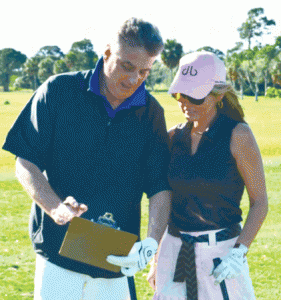 Hap Hazard is a golf teaching pro at Bucket O’ Balls Driving Range. He’s normally on time for his first lesson of the day, but as the morning wears on and morphs into afternoon, Hap is far behind on his lesson schedule. Mr. Smith arrives for his noon appointment, only to find that Hap can’t see him until 12:20. Mr. Smith decides to cancel the lesson and leaves.
Hap is actually happy to see this, because he can now get to his 12:30 lesson on time. The client, Mr. Jones, is someone to whom Hap gave a lesson two months ago. Mr. Jones keeps referring back to what Hap told him at that time, but Hap has no idea what Mr. Jones is talking about.
At the end of the week, Hap, an independent contractor who depends upon the range to collect his lesson fees, receives his check, but it doesn’t seem nearly enough for what he did. However, he has no way of disproving the check is wrong, so he has no choice but to accept the amount.
Hap Hazard is an example of a teaching professional who is highly disorganized. What are the mistakes Hap makes?
•He books 30-minute lessons 30 minutes apart, which makes him late for each subsequent lesson;
•He doesn’t keep records of the lessons he gives, so he doesn’t know what instruction he gave to past students;
•He doesn’t keep financial records, so the range kept money that rightfully belonged to him.
While this is a worst-case scenario, there are times where even the best among us may fall short occasionally. It takes great effort to keep an organized teaching operation.
If a teaching professional is busy enough to the point that he or she has to book back-to-back lessons all day, it doesn’t make much sense to schedule the start of a lesson at the same time the previous lesson concludes. Someone is going to get short changed. A 5- or 10-minute buffer between lessons is helpful, and if the teacher is extremely busy, it makes sense to occasionally build in a 15- or even 30-minute break to recharge and make sure things are organized.
A teaching professional should also take notes regarding each lesson. Nothing is worse than a student returning after a long absence and the teacher having no clue what instruction was given the last time. The instruction might be so far removed from the previous teachings that the student will be confused. And asking the student to remind us what was worked on can make us look a little less competent in the eyes of that student.
It also goes without saying that a financial record of each lesson should be kept. Hap’s arrangement is not uncommon, and it also makes sense to go over the day’s lesson receipts at the end of the day.
Other ways to be organized include having complete information about each student, including contact info, for future marketing purposes. It also doesn’t hurt to send birthday wishes or an occasional free golf tip.
It should go without saying that a golf teaching professional should be prepared for each lesson. If training aids are among a teacher’s arsenal, they should be readily available. Nothing is worse for the teacher to figure out that a certain training aid needs to be used, only to find it’s been left in the car or someplace in the cart barn.
Since video is becoming more frequent (al-though we find in 2017 that most teachers still don’t use it routinely, interestingly), making sure the equipment is in good working order, complete with charged batteries, is important.
Much of the advice given in this article seems like common sense, but you might be surprised how many times, or how many professionals, fall short in these departments, even if only occasion-ally. An organized pro equals happy students, and if they’re happy, they’re certain to return – and they might even tell their friends.
Hap Hazard is a golf teaching pro at Bucket O’ Balls Driving Range. He’s normally on time for his first lesson of the day, but as the morning wears on and morphs into afternoon, Hap is far behind on his lesson schedule. Mr. Smith arrives for his noon appointment, only to find that Hap can’t see him until 12:20. Mr. Smith decides to cancel the lesson and leaves.
Hap is actually happy to see this, because he can now get to his 12:30 lesson on time. The client, Mr. Jones, is someone to whom Hap gave a lesson two months ago. Mr. Jones keeps referring back to what Hap told him at that time, but Hap has no idea what Mr. Jones is talking about.
At the end of the week, Hap, an independent contractor who depends upon the range to collect his lesson fees, receives his check, but it doesn’t seem nearly enough for what he did. However, he has no way of disproving the check is wrong, so he has no choice but to accept the amount.
Hap Hazard is an example of a teaching professional who is highly disorganized. What are the mistakes Hap makes?
•He books 30-minute lessons 30 minutes apart, which makes him late for each subsequent lesson;
•He doesn’t keep records of the lessons he gives, so he doesn’t know what instruction he gave to past students;
•He doesn’t keep financial records, so the range kept money that rightfully belonged to him.
While this is a worst-case scenario, there are times where even the best among us may fall short occasionally. It takes great effort to keep an organized teaching operation.
If a teaching professional is busy enough to the point that he or she has to book back-to-back lessons all day, it doesn’t make much sense to schedule the start of a lesson at the same time the previous lesson concludes. Someone is going to get short changed. A 5- or 10-minute buffer between lessons is helpful, and if the teacher is extremely busy, it makes sense to occasionally build in a 15- or even 30-minute break to recharge and make sure things are organized.
A teaching professional should also take notes regarding each lesson. Nothing is worse than a student returning after a long absence and the teacher having no clue what instruction was given the last time. The instruction might be so far removed from the previous teachings that the student will be confused. And asking the student to remind us what was worked on can make us look a little less competent in the eyes of that student.
It also goes without saying that a financial record of each lesson should be kept. Hap’s arrangement is not uncommon, and it also makes sense to go over the day’s lesson receipts at the end of the day.
Other ways to be organized include having complete information about each student, including contact info, for future marketing purposes. It also doesn’t hurt to send birthday wishes or an occasional free golf tip.
It should go without saying that a golf teaching professional should be prepared for each lesson. If training aids are among a teacher’s arsenal, they should be readily available. Nothing is worse for the teacher to figure out that a certain training aid needs to be used, only to find it’s been left in the car or someplace in the cart barn.
Since video is becoming more frequent (al-though we find in 2017 that most teachers still don’t use it routinely, interestingly), making sure the equipment is in good working order, complete with charged batteries, is important.
Much of the advice given in this article seems like common sense, but you might be surprised how many times, or how many professionals, fall short in these departments, even if only occasion-ally. An organized pro equals happy students, and if they’re happy, they’re certain to return – and they might even tell their friends. 
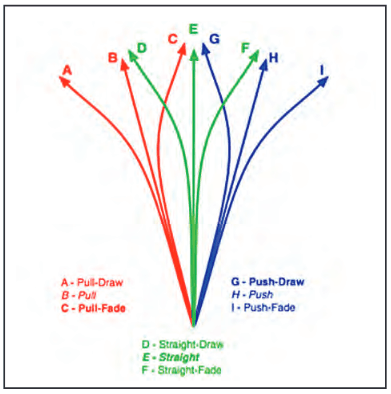 One of the perks of living in the 21st century is that improved technology has made many aspects of our lives more convenient. From using your smart phone to lock your car doors to computers that give us the entire body of accumulated knowledge at our fingertips, technology has made things easier in ways unheard of just 20 years ago.
One of the perks of living in the 21st century is that improved technology has made many aspects of our lives more convenient. From using your smart phone to lock your car doors to computers that give us the entire body of accumulated knowledge at our fingertips, technology has made things easier in ways unheard of just 20 years ago.
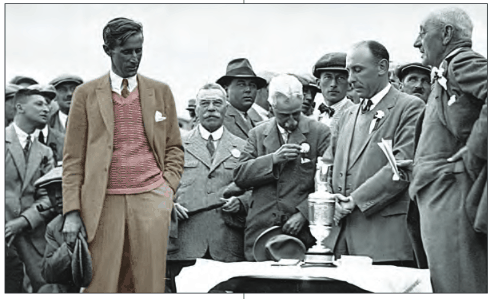 By Mike Stevens USGTF Certified Golf Teaching Professional® Tampa, Florida
By Mike Stevens USGTF Certified Golf Teaching Professional® Tampa, Florida